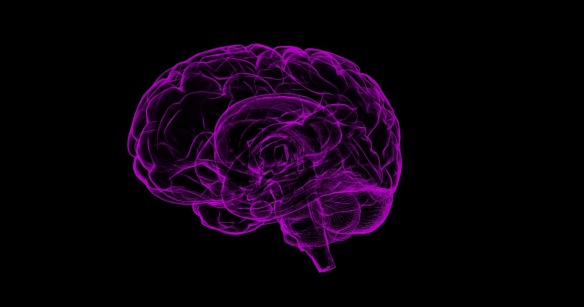By David Joel Miller, MS, Licensed Therapist & Licensed Counselor.
Out of control eating is officially a mental illness.
With the advent of the DSM-5, Binge Eating Disorder (307.51 F50.8), is officially a recognized mental illness. Reading through the description of this newly recognized disorder it occurs to me that this is not what most non-professionals have been thinking of when they talk about people who overeat. What follows is my oversimplified explanation of how I understand this and how it might affect clients I see. For the full official description, you would need to read the APA’s DSM-5 text.
Why does Binge Eating Disorder matter?
Given the APA’s estimates, the number of people in the U. S. who currently have or meet the criteria for Binge Eating Disorder would run from 2 ½ to 5 MILLION people. A look at the criteria also indicates this is a lot more serious condition than we might first think. A lot of the criteria remind me of the features we see in alcoholism. This is more than just liking to eat. Binge Eating Disorder goes all the way to losing control.
First, some things that do not appear to be included in the definition of Binge Eating Disorder and then the things that might define the disorder.
What Binge Eating Disorder is not:
Binge Eating disorder is not being overweight or obese.
We think that excess weight is a medical problem. There are a lot of reasons someone could be overweight or even obese that have nothing to do with binge eating. Mental Health and obesity have a lot of connections but Binge Eating Disorder is not the only one. (More on how mental illness may be making you overweight in an upcoming post.)
Binge Eating Disorder is not Holiday Eating.
That Thanksgiving dinner is a good reason to gorge yourself. It is almost Un-American to eat lightly on that holiday. Lots of families have other traditional family or holiday celebrations and the food is a major part of that celebration. We do not count social eating events as Binge Eating Disorder even if after the holidays you find you have packed on some pounds.
Snacking all day is not Binge Eating Disorder.
Some people have told me that eating small amounts of food at many small meals a day is healthier than a few huge ones. I am also told that eating lots of food is healthy if you can do it all day long. (I am skeptical of that argument.) There was a time when low weight people died every winter and a fat baby was considered a healthy baby. Modern healthcare has severed that connection, but I know new parents often worry if their child is not gaining weight as rapidly as they expected.
Eating because you are chronically hungry is about poverty, famine, or bad nutrition.
If someone is low in body weight and eats a lot that is probably not Binge Eating Disorder. If they are staying low body weight because they do other “compensating” behaviors that is a different kind of eating disorder most likely Bulimia Nervosa.
Eating frequently because you are growing, expending energy, or just plain hungry is not Binge Eating Disorder. Binging is sneakier than that.
What factors do make it Binge Eating Disorder?
The Binge eater feels bad when they do it.
People with Binge-eating Disorder may eat alone so others do not see how much they eat. This behavior reminds me of the alcoholic sneaking drinks. The Binge Eater does not want others to see them binging. They may eat in solitary, hide the evidence, and feel guilty or ashamed of what they do.
Eventually, that shame and or guilt become a separate problem that needs treatment and may be the thing that keeps the binging behavior going even if they want to stop.
Binge eaters lose control of their eating.
This loss of control takes many forms. The binge eater eats fast, very fast. They eat more than they want. They can’t stop eating even when they are overfull. They may keep on eating to the point of feeling sick to their stomach.
One of the defining features of this disorder is the tendency to eat huge amounts of food in a short period of time. A binge eater will eat enough food for two or three people and do it in 2 hours of mealtime or less.
Binge Eaters do these behaviors a lot.
This is not something that the binge eater does occasionally. To get this new diagnosis a person would need to binge at least 13 times over a three-month period.
The Binge Eating Disorder diagnosis allows for a range of severity.
The minimum is 13 times in three months. Extreme Binge Eating Disorder is binging two times a day all 7 days a week. To meet the 3-month rule and have extreme Binge Eating Disorder would require over 180 episodes of binging with no compensating efforts to lose the calories.
Emotional Eating does not automatically count as a Binge.
Most counselors have heard clients describe times they “emotionally eat.” You have a fight with your partner and there go the whole two gallons of ice cream. Those uses of food to make yourself feel better are more likely a part of depression, anxiety, or that often overlooked but sometimes fatal Adjustment Disorder.
The Binge Eating conclusion?
If you are overweight or obese see your doctor and work on your physical health. If you occasionally use food as a drug to treat your emotional problems work on those problems. But if you find that you or someone you know is repeatedly binging on food, feels shame and guilt about this behavior, or has lost control of how much they eat, it is time for some professional help.
Staying connected with David Joel Miller
Seven David Joel Miller Books are available now!
My newest book is now available. It was my opportunity to try on a new genre. I’ve been working on this book for several years, but now seem like the right time to publish it.
Story Bureau is a thrilling Dystopian Post-Apocalyptic adventure in the Surviving the Apocalypse series.
Baldwin struggles to survive life in a post-apocalyptic world where the government controls everything.
As society collapses and his family gets plunged into poverty, Baldwin takes a job in the capital city, working for a government agency called the Story Bureau. He discovers the Story Bureau is not a benign news outlet but a sinister government plot to manipulate society.
Bumps on the Road of Life. Whether you struggle with anxiety, depression, low motivation, or addiction, you can recover. Bumps on the Road of Life is the story of how people get off track and how to get your life out of the ditch.
Dark Family Secrets: Doris wants to get her life back, but small-town prejudice could shatter her dreams.
Casino Robbery Arthur Mitchell escapes the trauma of watching his girlfriend die. But the killers know he’s a witness and want him dead.
Planned Accidents The second Arthur Mitchell and Plutus mystery.
Letters from the Dead: The third in the Arthur Mitchell mystery series.
What would you do if you found a letter to a detective describing a crime and you knew the writer and detective were dead, and you could be next?
Sasquatch. Three things about us, you should know. One, we have seen the past. Two, we’re trapped there. Three, I don’t know if we’ll ever get back to our own time.
For these and my upcoming books; please visit my Author Page – David Joel Miller
Want the latest blog posts as they publish? Subscribe to this blog.
For videos, see: Counselorssoapbox YouTube Video Channel









